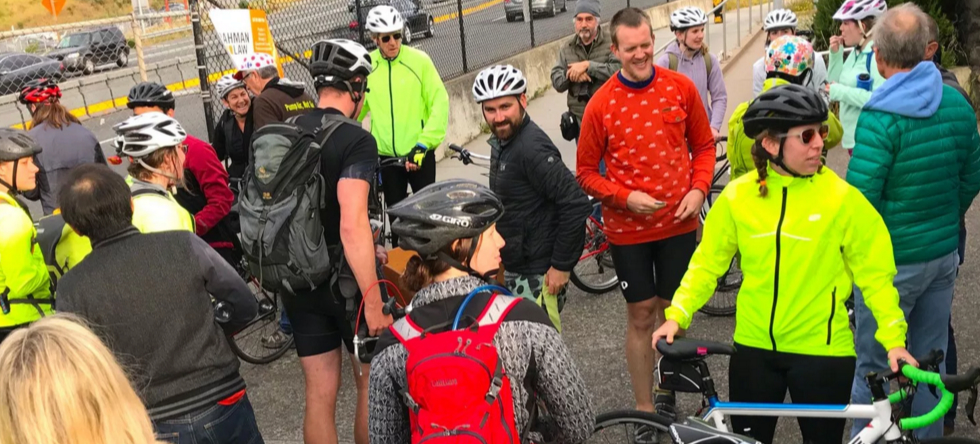Dick Spotswood of the Marin Independent Journal was correct when he recently stated that adding highway lanes won’t fix our traffic problems. A common adage in transportation circles compares building more lanes to doctors counseling obese patients to simply loosen their belts.
However, Spotswood was wrong when he glibly asserted that bikes are of little utility to Marinites traveling to work or doing business.
A recent Transportation Authority of Marin study found that 57 percent of all trips in Marin are under five miles. For trips of this distance, bikes aren’t just a feasible option but often quicker than cars, particularly with Marin’s current traffic snarls.
Thousands of Marin County Bicycle Coalition (MCBC) supporters will attest to that.
A wealth of evidence highlights how safe and convenient bicycle routes translate into less congested roads, especially during commute hours. And of course each bicycle trip equals one less car on the road.
Nearly a third of Marin’s weekday morning traffic comes from students driving to or being dropped off at school. The 83 percent of campuses with Safe Routes to Schools programs have enjoyed school-related traffic reductions of up to 30 percent. This MCBC-administered and Transportation Authority of Marin-funded program works.
Those results have benefited everyone, especially motorists. They’ve also translated into cleaner air and healthier kids.
These aren’t slogans. They're real facts supported by hard data.
We all know we’re in an era of backlash politics. We can’t, however, let our frustrations with traffic allow us to ignore facts and embrace antiquated transportation policies.
Traffic fixes won’t be found in the rearview mirror.
The MCBC fully understands that not everyone will choose to ride a bike. But many want to use their bikes more often, for a wider range of trips--from commuting, to running errands, to simply enjoying themselves--yet aren’t confident they can do so safely.
A 2015 survey found that 51 percent of Americans wanted to cycle more regularly, but had too many safety concerns.
When communities and regions invest in safe and convenient bicycle routes, people are more likely to turn to their bikes for everyday transportation. Those investments are why the number of bicycle commuters in “bike-friendly” U.S. cities more than doubled between 2000 and 2013, according to the U.S. Census Bureau.
What about for longer trips, or Marin’s hills? Are bikes only for the young and fit? Hardly.
As Spotswood discovered recently, electric assist bikes can “flatten” Marin, making local trips both practical and fun. And as he observed, “Cycling infrastructure improvements make riding much easier and safer.”
MCBC--together with our public agency partners--have made great strides toward building a functional bicycle network in Marin. But there’s more work to do.
Marin must concentrate its efforts on assembling complementary strategies to make our transportation system work better for people of all ages, abilities and financial means. Safe and convenient bicycle travel continues to be central to the solution.
Jim Elias is Executive Director of the Marin County Bicycle Coalition.





